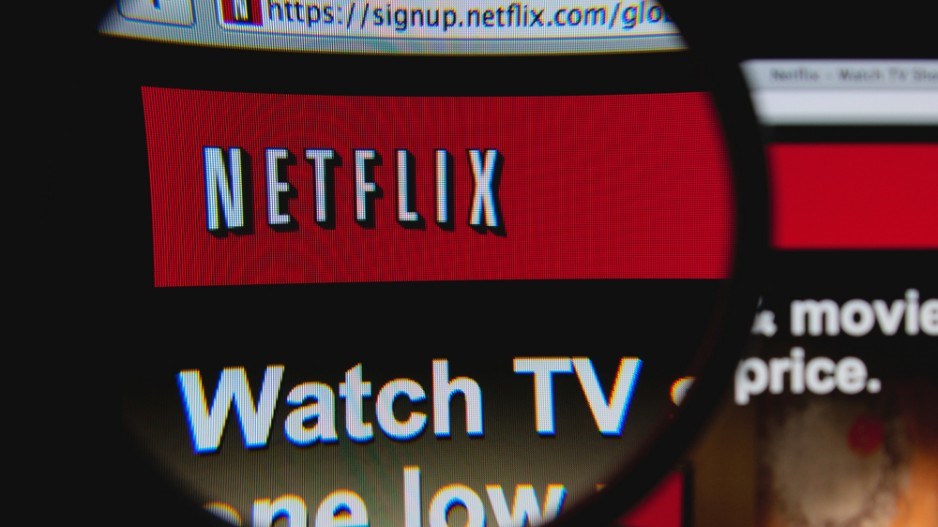The prospect of instantly streaming and binge-watching movies and TV shows on Netflix has been enticing for Canadians.
Nearly six million residents have subscribed to the service since its 2010 launch in Canada, according to a 2014 report from Media Technology Monitor.
But the amount of data it uses – one high-definition movie requires between 1.5 gigabytes and two gigabytes – has proven to be one of the bigger challenges for Internet service providers (ISP) who teeter-totter between retaining clients and infrastructure upkeep.
Telus (TSX:T) took heat last month from advocacy groups following its decision to do away with unlimited Internet and impose data tiers on customers. Beginning March 30, customers who go beyond their monthly data allowance are automatically charged for an additional 50 gigabytes of data.
The decision came just days after the Vancouver-based telecom giant announced it would be making Netflix more accessible to its Optik TV subscribers. Instead of users accessing the streaming service through another piece of hardware that connects to the Internet (such as a PlayStation or an Xbox), Telus now allows people to turn on Netflix directly through its Optik TV set-top box.
Josh Tabish, campaigns manager with the Vancouver-based Internet advocacy group OpenMedia.ca, said the move is unfair to consumers who have a tough time wrapping their heads around the differences between TV and Internet services provided through the same optic fibre cables on Telus’ network.
“And even though [TV and Internet are] moving across the same pipes,” said Tabish, “they’re not being treated the same way, and that’s because Canada’s telecom and broadcasting regulations are sorely out of touch with how content is being moved across networks these days, and as a result Telus is able to give kind of their own content certain perks and preferences. Their TV service, the prices stay the same but … open Internet becomes more expensive even though Telus is responsible for both and delivers them [for] the same cost.”
Telus chief corporate officer Josh Blair told Business in Vancouver offering data-heavy services like Netflix through Optik TV is about providing customers what they want.
“They’re going to subscribe to the services they want, regardless, so to the extent we can make that experience easy for them and enjoyable for them inside of Optik, that provides upside for us,” he said.
Meanwhile, telecom analyst and consultant Mark Goldberg said Telus’ decision to move away from unlimited Internet was expected.
“They’re among the last of the major Internet service providers to be applying usage tiers. And Telus’ pricing is, as far as I can see, the lowest pricing for those tiers.”
Goldberg added that continued growth in the marketplace has levelled off when it comes to introducing the Internet to more households.
Canadian Radio-television and Telecommunications Commission data collected in 2013 showed residential broadband is available to 97% of homes in Canada.
“If that pattern holds, then it means revenues have kind of flattened but the investment is still required; you have to continue to expand capacity,” Goldberg said, adding Telus’ move to tiered use was likely sparked by the need to keep its network at state-of-the-art conditions.
“There was really no monetization coming that was reflecting the additional use by people.”
But Tabish said the pattern of major ISPs charging Canadians in this manner is really a step backward for the country.
“Around the world we see more and more a model … that’s based on paying for speed rather than nickel-and-diming customers for caps and overage fees.”




